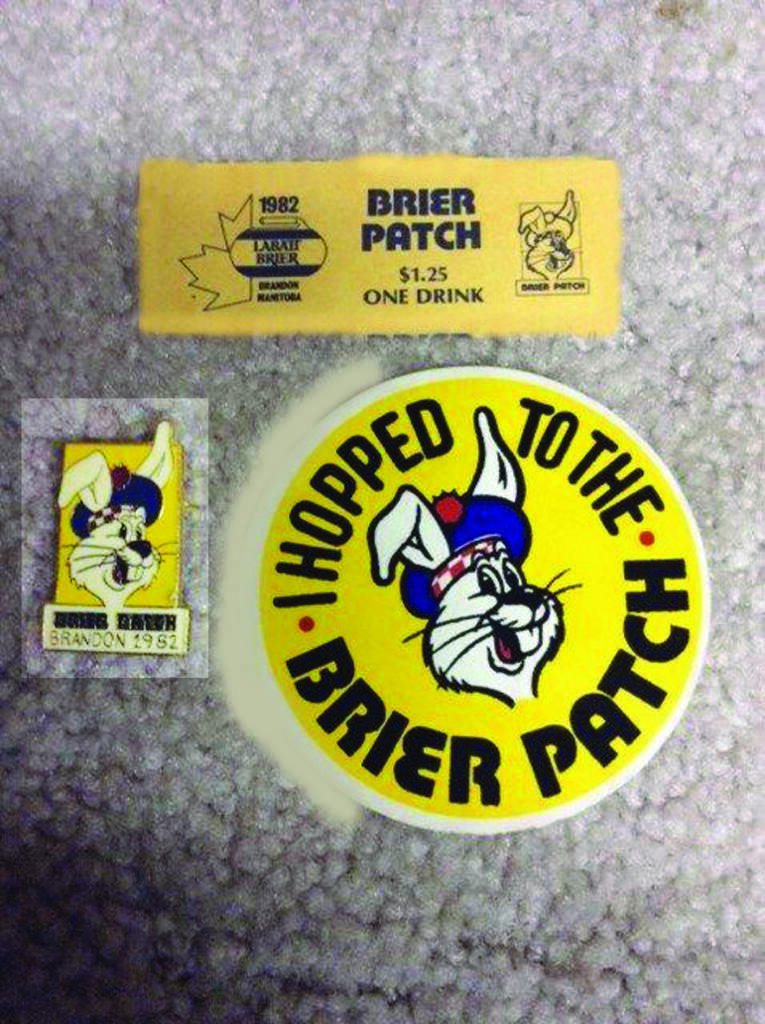What is it?

Next to the action on the ice, the entertainment venue at all of Curling Canada’s Season of Champions events is crucial.
It is the heartbeat and a huge financial component of the event. It is where curling fans come to mingle, watch the action on closed-circuit TV, tip back a few brew, dance to some music and generally have a whale of a good time. It is Party Central unlike anything else in sports.
Indeed, no major curling event today would survive without what has generally come to be known as ‘The Patch’.
And it all started in Brandon, Man.

You could look it up. It was back in 1982 when Brandon hosted the Labatt Brier at what then was called the Keystone Centre, that a committee struck to plan for the Canadian men’s curling championship came up with the novel idea to offer an entertainment element to complement the show on the ice.
The idea may have been born more out of necessity than brilliant planning, but as it turned out, the idea of a Brier Patch turned out to be a huge success and has, over the years, become almost as important as the action on the ice.
“It started in Brandon and we’re pretty proud of that,” says Don Pottinger, who was general chairman of the Brandon Brier management committee in ’82, and was instrumental in its creation.
Pottinger, 74, who now lives in Minneapolis with his wife Donna where he does consulting work in the agriculture production business, says his committee faced a rather serious problem in planning for the ’82 event. The numbers weren’t working.
“When we starting planning the details of the thing it became very clear when you considered the number of tickets that the Canadian Curling Association (now Curling Canada) wanted and the number of people we had who were eager to go, that there was no way we could jam all those people inside the arena for every game, particularly the important ones,” said Pottinger.
What to do, what to do?
Pottinger said his committee, which called themselves the Brown Baggers because they met daily at lunchtime at the Keystone Centre to update themselves on planning and to troubleshoot, pondered the dilemma until, one day, the light bulb went on.
“We thought one of the things we’d be able to do, because the Keystone Centre is a pretty good facility, is take close-circuit TV, move it into the Manitoba Room, which was a great, big room there, and in that way enable people to be at the Keystone to get caught up in the Brier, despite the fact they may not have been able to get into the games,” said Pottinger.
The closed-circuit feed was the focal point of the first Patch, but Pottinger and his committee were smart enough to know it wasn’t enough. Curlers and curling fans like a good time. That’s why they have a lounge in almost every curling club in the nation. So the introduction of food and wobby pops, plus some local entertainment, was a natural fit for The Patch.
Pottinger said The Patch was such a novel idea, curling fans didn’t know what to make of it at first.
“It was so new, it took people a few minutes to know it was there, and what it was,” he said. “People came to it, looked around, liked it, spread the word, and came back with their pals.”
The Patch was soon a success. The room was crowded daily with fans, and a tradition was born.
“The popularity of it caught us a bit off guard,” said Pottinger. “It was popular during the games, and certainly after the games.”
But that name: The Brier Patch. What was up with that?
 “We had a guy on a committee by the name of Alex Matheson,” said Pottinger. “He passed away recently, but he had a flair for art and actually drew a logo and came to a meeting with a picture of a funny kind of rabbit and the words ‘Brier Patch’ under it. We adopted it right then and there.”
“We had a guy on a committee by the name of Alex Matheson,” said Pottinger. “He passed away recently, but he had a flair for art and actually drew a logo and came to a meeting with a picture of a funny kind of rabbit and the words ‘Brier Patch’ under it. We adopted it right then and there.”
The logo is gone but the ‘Patch’ name lives on.
Sudbury followed Brandon, making improvements to The Patch, and Victoria was next, ramping things up even more. As each new Brier host committee took on The Patch, it tried to adapt the venue to fit its own unique setting. That’s why in Atlantic Canada you’ll be fed seafood chowder as fiddlers play, while in the west it’s a steady diet of country bands and roast beef on a bun.
Most major curling events have adopted The Patch idea. Every Season of Champions event has one.
Pottinger is not surprised The Patch has grown and flourished over the years.
“Curling’s a very social event,” he says. “To assume that, in this day and age, that people are going to sit in their seats for 2 ½ hours, go back to their rooms, and come back the next day, is silly. That way of doing things went out with 18-buckle galoshes. We live differently now and entertainment has changed. Opportunities have changed. To turn it into a social event, and not just a sporting event, just makes total sense.”




